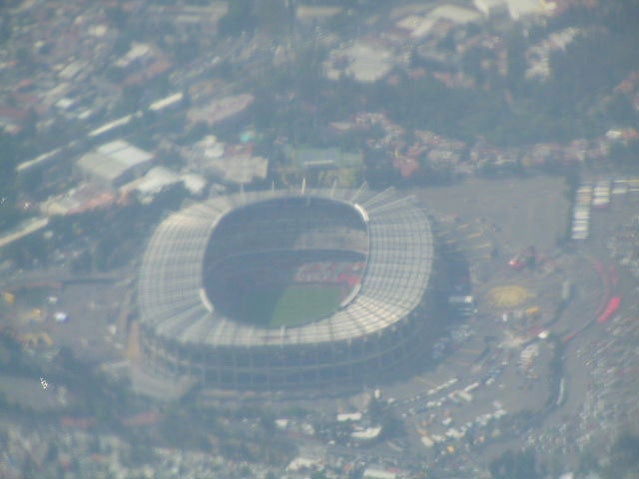The U.S. menтАЩs soccer team Mexico yesterday. Neither team played a full-strength lineup, and, as an international friendly, the game, literally, counted for nothing.
Some other things: The game was played in Estadio Azteca in Mexico City, where the U.S. was 0-8-1 coming into the game. The Americans were 0-23-1 in all games against Mexico played in Mexico before yesterday.
Whatever this game actually тАЬmeansтАЭ doesnтАЩt matter. But notwithstanding, winning a game in Azteca is a rare thing for any team that isnтАЩt Mexico, so rareтАФMexico has only lost nine times at Azteca, everтАФthat, by definition, it is impressive, whatever the circumstances.┬аEspecially when you consider that the Americans basically did it with plastic bags on their heads.┬а
MEXICO IS A GOOD-unto-average-unto-good-unto-etc. soccer team, much like the U.S. By no means are they a world power. TheyтАЩve never won a World Cup and havenтАЩt ever made it past the quarterfinals. TheyтАЩve the youth-soccer circuit over the past few years, so maybe theyтАЩre on the verge of some breakthrough, but that still doesnтАЩt explain the past 90-or-so years.
Azteca holds 104,000 people, all of whom, if they care about personal health beyond the next 90-plus minutes, are rooting for Mexico. AztecaтАЩs fans have been know to beers, bags of vomit, and ziplocs of urine at players. For their own safety, Mexican police routinely escort American fans out of the stadium. ItтАЩs rare for American broadcasters to leave Azteca not covered in alcohol. Plus, you know, itтАЩs not like Mexico is a place that youтАЩd necessarily go if your main trip requirement was тАЬdonтАЩt die.тАЭ┬а
So, add all that up and it creates an intimidating environment for sure. But still, itтАЩs way too easy of an explanation for such sustained, dominant dominance from a country thatтАЩs really not all that dominant on the world-soccer scene. A betterтАФbut still not completeтАФexplanation might have something to do with an imaginary plastic bag thatтАЩs not filled with human excrement.
FIFA PRESIDENT SEPP BLATTER games at high-altitude stadiums a few years ago, but Azteca comes in right on the edge of that threshold, at 7,349 feet. Also, while Mexico CityтАЩs historically gross air-pollution levels have , theyтАЩre still about on par with the levels in Los Angeles, which was an тАЬFтАЭ for air-quality levels by the American Lung Association earlier this year.┬а
тАЬOnce you get above 4,500 feet, your body starts to feel the effects of altitude,тАЭ said Sarah Baysden, instructor of Exercise and Sports Science at . тАЬSeven thousand feet is pretty significant if youтАЩre not used to barometric pressure.тАЭ
As anyone whoтАЩs ever gone from sea level to a couple thousand feet up knows, itтАЩs kind of a shocking adjustment. ItтАЩs harder to get oxygen into your lungs, making it harder to breathe and even harder to catch your breath. And thatтАЩs when youтАЩre just walking around, not playing a high-level soccer game for an hour-and-a-half.
It takes about a week to acclimatize to high altitude, getting over any initial illness/shock. And thatтАЩs usually the most training-time visitng teams get before playing. But it requires something like 104-times that to actually get to your regular-functioning level.
тАЬIt takes usually about two years of living in altitude to become accustomed to it,тАЭ Baysden said, тАЬwhile the Mexican athletes donтАЩt know any different.тАЭ Real, scientific home-field advantage.
The air pollution plays a part, too, but that would affect both teams more evenly, according to Baysden. Still, it certainly doesnтАЩt make things any easier for AztecaтАЩs visitors.
So, what was it like for, say, Fabian Johnson, who, coming from Germany, played 90 minutes for the U.S. last night?
тАЬIt feels as if your rib cage or diaphragm wonтАЩt expand,тАЭ Baysden said, тАЬand it feels like you canтАЩt catch your breath. Trying to catch your breath between bursts of speed, you definitely wonтАЩt be able to feel like youтАЩre recovering.тАЭ
More simply?
тАЬItтАЩs like breathing with a plastic bag on your head.”


